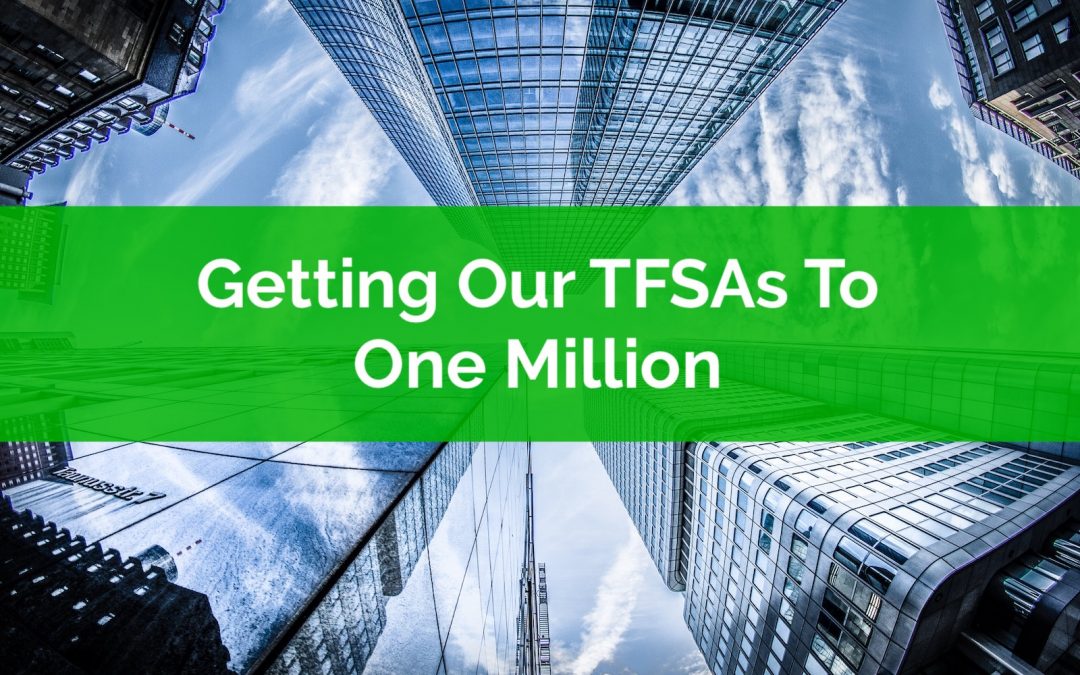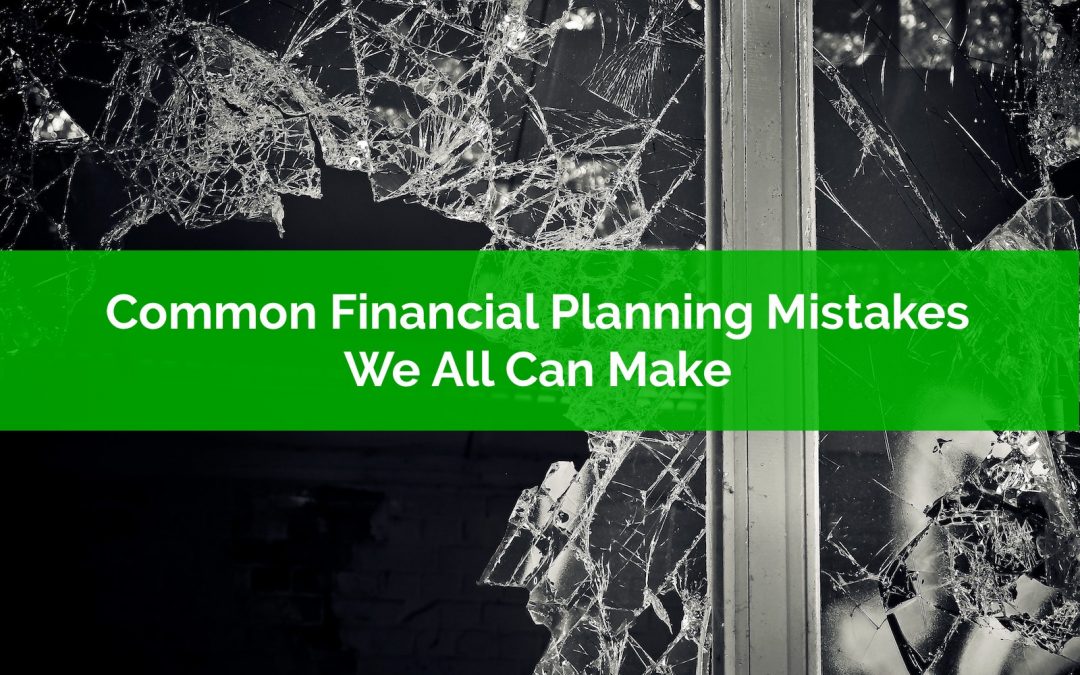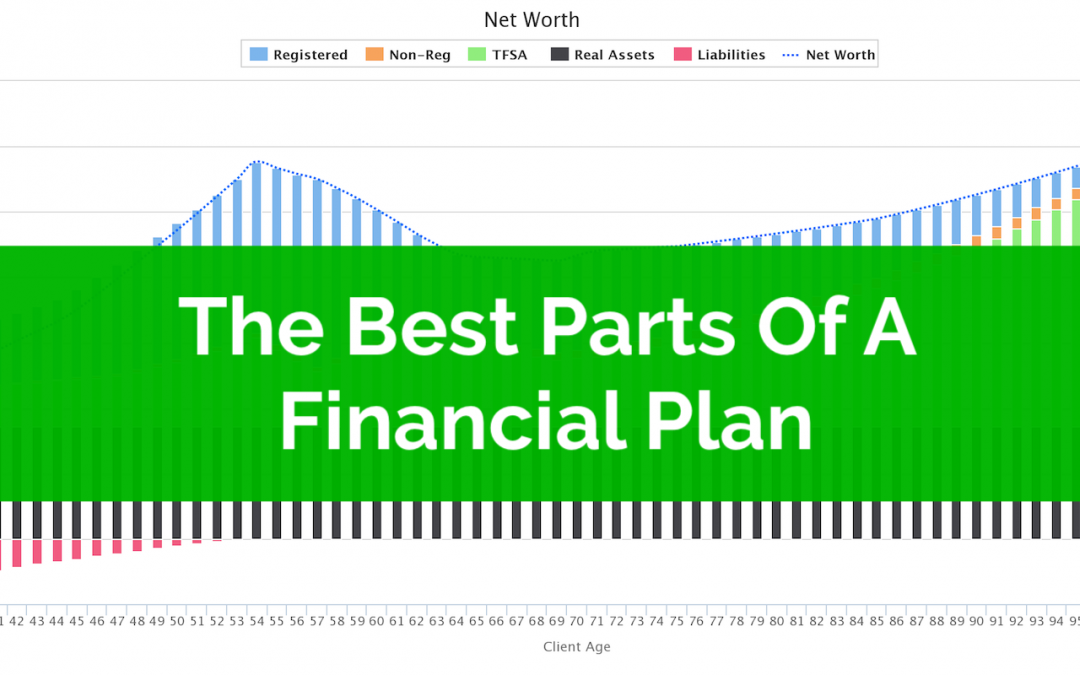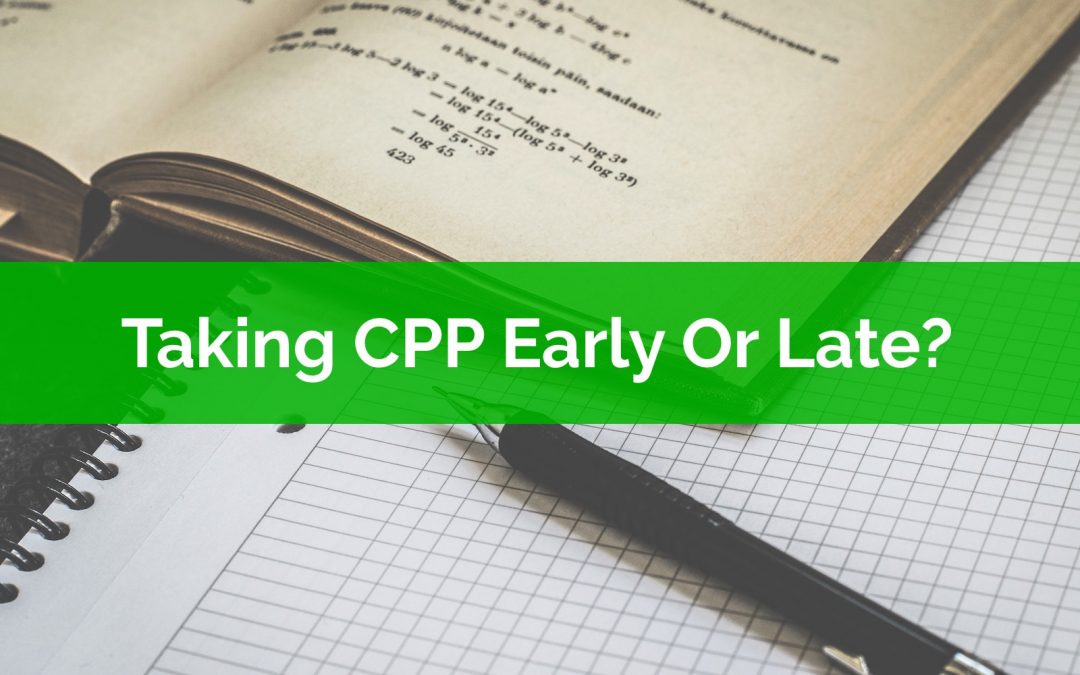
by Owen | Aug 26, 2019 | Financial Goals, Retirement Planning, Tax Planning
TFSAs are an amazing tax sheltered account that every Canadian has access to regardless of income. Unlike RRSP contribution room, which is based on employment income, we all get the same amount of TFSA contribution room every year.
The TFSA is a perfect way to save for retirement. In fact, for many young people they are better off starting with their TFSA rather than their RRSP, especially when they’re starting out at a lower income.
At lower income levels the TFSA can provide many advantages versus the RRSP. Namely that future withdrawals aren’t taxed and won’t count towards government benefit claw backs.
There are other benefits to the TFSA too, like if you have a habit of spending your tax refund. If that’s the case then maybe a TFSA contribution is a better idea.
My wife and I have a BIG goal for our TFSAs. Our goal is to grow our combined TFSAs to $1 million by the time we reach early retirement at age 55. This is an ambitious goal, one that we may not meet, but it’s fun to have a BIG financial goal like this. We find it motivating to have BIG financial goals and it gives us something to work toward.
Two years ago I provided an update on our progress to our one million TFSA goal and I think it’s time to do it again. Not just for the accountability but also because it’s good to share how amazing the TFSA is for these kinds of goals.

by Owen | Aug 19, 2019 | Behavioral Finance, Investment Planning, Retirement Planning, Tax Planning
When we do our own financial planning we’re often too close to our own situation to have an objective perspective. We may focus on the wrong problems… or take a narrow view of the potential solutions… or miss potential issues entirely.
One of the benefits of working with a financial planner is that they provide a second set of eyes for your financial plan. Most people are already on the right path, but there are common issues that may end up working against you. A financial planner can help find these common mistakes that may otherwise go unnoticed.
Financial planning isn’t rocket science, it’s something that can be done on your own. The math itself isn’t terribly difficult, and there are tools available online to help, but one of the major downfalls of the DIY approach is that we can be somewhat oblivious to our own personal biases.
Basically, we’re too close to our own financial situation to be entirely unbiased (This goes for financial planners too!) There are certain financial planning mistakes that we all tend to make if we’re not careful.
These mistakes can lead to potential issues over time. These issues can create more risk, or decrease investment return, or increase taxes, or create a higher risk of running out of money in retirement.
These mistakes are quite common and identifying these potential issues is the first step to creating a stronger financial plan.

by Owen | Jul 1, 2019 | Financial Planning, Retirement Planning
Financial planning is a fascinating process. When building a financial plan there are equal parts of finance (math, numbers, money etc), and personal (values, goals, risk aversion etc). This makes every financial plan unique. No two financial plans are the same. Even when two people start with the exact same income, assets, debt and expenses, the fact is their plan will differ because they have different goals and personal values.
Even though the plan may differ, there are certain parts in a financial plan that never change. There are net worth projections, income projections, cash flow planning, income and expenses etc etc.
In this post, I’m going to highlight some of my favorite parts of a financial plan. These are what I would consider to be the best parts of a financial plan, the most interesting, the best of the best. But it doesn’t represent everything. There are many great parts of a financial plan and the “best” part can differ from plan to plan.
For example, we won’t talk about government benefits below, but for many households, especially those with children under the age of 17, government benefits play a big role in their financial plan. We recently did a plan for a young family where a few small changes allowed this family to reduce their income tax and increase their government benefits by $100,000+ over the course of their plan! That would definitely be the best part of that plan!
What we will cover in this post are net worth projections, debt payoff plans, planning around different income sources, and how we understand the “success rate” of a plan.

by Owen | Jun 17, 2019 | Government Programs, Investment Planning, Retirement Planning
In the last blog post we looked at the financial considerations when deciding to take CPP early or late. But personal finance is never just about the money. Half of personal finance is personal. The “best” path varies from person to person even when the numbers are exactly the same. When it comes to taking CPP early or late these personal considerations can make a big difference.
There are many “soft benefits” to taking CPP early or late. These benefits can make taking CPP early look more favorable… or it can make taking CPP later look more favorable… it just depends on how much YOU value each benefit.
Before deciding to take CPP early or late it’s important to understand what your goals are for retirement. Not just financial goals but personal goals. What do you want to do in retirement? What does your retirement look like? This may inform some of your decisions around these “soft benefits”
It can also help to have a financial plan and see how taking CPP early or late helps you achieve your financial goals. Everyone is different, and the decision to take CPP wont be the same for everyone.

by Owen | Jun 10, 2019 | Government Programs, Investment Planning, Retirement Planning
Should you take CPP early or late? Are you considering taking CPP early? Are you wondering if you should delay? Should you take it early at age 60? Should you wait until regular retirement age at 65? Should you delay until age 70, the last date possible?
When to start taking CPP is just one of the many difficult decisions soon-to-be retirees face as they approach their retirement date.
It’s a big decision, and like many financial decisions there are many aspects to consider when deciding when to take CPP.
When a soon-to-be retiree is deciding to take CPP early or late there are both financial considerations as well as non-financial considerations to weigh.
Taking CPP late can provide a financial benefit if you plan to live past a certain age. This is a number and it’s easier to evaluate but it’s based on longevity, which is a big unknown.
Taking CPP late also has non-financial considerations. There are “soft benefits” to delaying CPP. Depending on how much you value these soft benefits they can be worth quite a bit as well.
Even when two people have the exact same financial situation, they may choose different times to start CPP simply due to these longevity questions and soft benefits.
When deciding to take CPP or delay its first important to get basic understanding of how CPP works and how CPP payments change each year as you delay.

by Owen | May 20, 2019 | Budgeting, Retirement Planning
One of the most important aspects of your retirement plan is knowing how much you plan to spend during your retirement years. Knowing exactly what spending looks like in retirement is one of the most important (and sometimes the hardest to determine) parts of a retirement plan. Even small changes in spending can have a big impact on the success of a retirement plan, so making a good retirement budget is critical.
Depending on your level of spending, that last $10,000 in spending could incur marginal tax rates of 30-40%+. For example, going from $70,000 to $80,000 per year in spending will incur a high marginal tax rate on that extra spending. If we’re using RRSPs to fund part of retirement then we’d need to make pre-tax withdrawals of $14,286 to $16,667 just to support that last $10,000 in spending.
If there was no tax we could support that last $10,000 in spending with financial assets of around $250,000 (this varies from situation to situation but for simplicity we’ll assume a 4% safe withdrawal rate). But to support the taxes on those withdrawals we need much more. To support that last $10,000 in spending we need between $357,142 and $416,667 in registered assets!
This is why getting your spending assumptions right is very important when building a retirement plan.
This is where guidelines like the 70% rule can be very dangerous. It might be ok to use these rules of thumb when you’re 20-30 years away from retirement but when you’re 5-15 years away from your retirement date they can be very misleading.
To create a solid retirement plan we want to build a detailed retirement budget. We want a budget that is built from the ground up, category by category, and is based on facts. It’s more accurate to say how much you’ll spend in each category and then add it up versus using a general guideline like the 70% rule. Plus, it provides a great opportunity to review your spending and ensure it aligns with your values and goals.
There are a few key considerations when building a retirement budget.
Page 16 of 19«...1415161718...»






